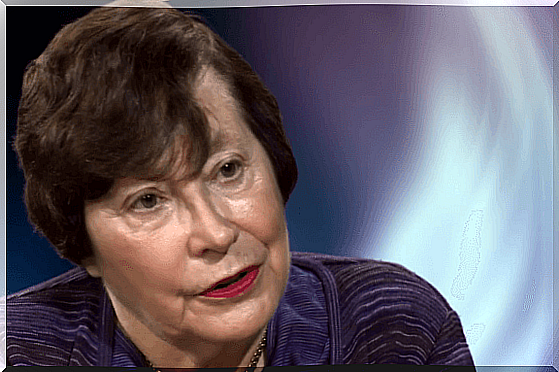Nancy Andreasen: Biography And Studies On Schizophrenia

Nancy Andreasen is a doctor in the United States. She is also a professor of psychiatry at the university, director of the Neuroimaging Research Center, and practices at the Clinical Mental Health Research Center at Carver College of Medicine at the University of Iowa.
If we are unfamiliar with the world of medicine or psychiatry, its name probably doesn’t mean much to us. But Nancy Andreasen is a recognized researcher. His work and numerous studies have contributed immensely to our knowledge of schizophrenia. His academic life, in fact, has not always been linked to medicine. Andreasen has indeed studied letters.
In fact, she has a doctorate in English literature and specializes in Renaissance literature. She worked as a teacher in this field but then her life took another direction. After the birth of her first daughter, Andreasen experienced serious health issues that prompted her to make a decision: to study medicine. Her thirst for knowledge was thus quenched and she chose to specialize in psychiatry.
However, his research was not limited to this area. She has always been interested in other branches: creativity, spirituality, neuroimaging, genomics, natural history and the neural mechanisms of schizophrenia. We therefore invite you to discover all the contributions of this woman doctor.

Nancy Andreasen’s “firsts”
What exactly do we mean by this term “firsts”? Nancy Andreasen was a pioneer in different fields. She is a woman who has dared to throw the first stone on numerous occasions. Thus, his career was deeply marked by these “firsts”:
- The first quantitative Magnetic Resonance (MR) study on schizophrenia.
- The development of the first scales to measure the positive and negative symptoms of schizophrenia.
- The first modern empirical study of creativity that examined family and environmental factors, cognition, and the relationship to mental illness.
- The first study that combines genomic techniques and neuroimaging techniques.
This doctor also made her contribution in the field of psychiatric diagnosis with the working groups on DSM III and DSM IV. In fact, she was tasked with laying the foundation for the study of stress disorders by writing the definition of post-traumatic stress disorder (PTSD) for the DSM III.
Andreasen has also served as president of the American Psychopathological Association and the Psychiatric Research Society. She is currently a member of the Institute of Medicine of the National Academy of Sciences and of the American Academy of Arts and Sciences.
Nancy Andreasen and her work on schizophrenia
Nancy Andreasen is an expert in the field of schizophrenia. She has carried out numerous studies which have contributed to the understanding of the mechanisms of this disease and to the improvement of its treatment.
Schizophrenia is one of the most important public health problems. It affects 1% of the world’s population. According to the World Health Organization (WHO), ranks ninth among all diseases in terms of global weight. Schizophrenia comes after cancer, AIDS, heart disease, diabetes, and other major illnesses.
The signs and symptoms of schizophrenia are diverse. They include perceptual disturbances i.e. hallucinations, inferential thoughts (delusions), goal-directed behavior (avolition), and emotional expression (emotional blunting), among others. However, none of these signs and symptoms can be considered pathognomonic or definitive.
Thus, each symptom is present in a few patients, but none is present in all patients with schizophrenia. In this sense, this disease differs from the majority of other mental illnesses which, generally, affect only one brain system, such as Alzheimer’s disease (memory) or manic-depressive psychosis (mood).
The symptoms and signs of schizophrenia are extremely diverse and complex. This is why an effort has been made very recently to simplify thoughts about the disease by dividing them into several natural categories.
Andreasen’s reconceptualization of schizophrenia
The modern reconceptualization developed by Nancy Andreasen divides the symptoms into “positive” and “negative”. She defines positive symptoms as an exaggeration of normal functions (the presence of something that should be absent) and negative symptoms as loss of normal functions (the absence of something that should be present).
- Positive symptoms include: delusions, hallucinations, disorganized communication, and disorganized behavior.
- Negative symptoms include: alogia, avolition, anhedonia, and emotional dullness.
In the parlance of neuroscience, schizophrenia is a disease that affects distributed neural circuitry. It therefore does not affect individual cells or regions. These disorders are sometimes called erroneous connection syndromes. The majority of people with schizophrenia have a subjective feeling that their ability to think and feel has become disorganized or disconnected.
Neuroimaging
Neuroimaging tools have allowed us to study how the brains of people with schizophrenia work. Studies have shown us that the subjective experience of “disconnection” or “disorganization” reflects a problem with the ability of distributed brain regions to send messages efficiently and accurately.
The etymology of the name of the disease is therefore more than appropriate. Literally, schizophrenia means “fragmented or disconnected mind”. This name describes what is observed through neuroimaging techniques.

Nancy Andreasen is currently continuing her research work by carrying out studies that help to improve our knowledge about schizophrenia and, therefore, to refine its treatment. This research includes structural and functional studies of neuroimaging, as well as studies that examine genetic and genomic factors and integrate them into neuroimaging studies.
Ultimately, Nancy Andreasen is a very important figure in the field of psychiatry and, more specifically, of schizophrenia. This doctor is tirelessly dedicated to her research, and we owe her enormous progress in this area.










